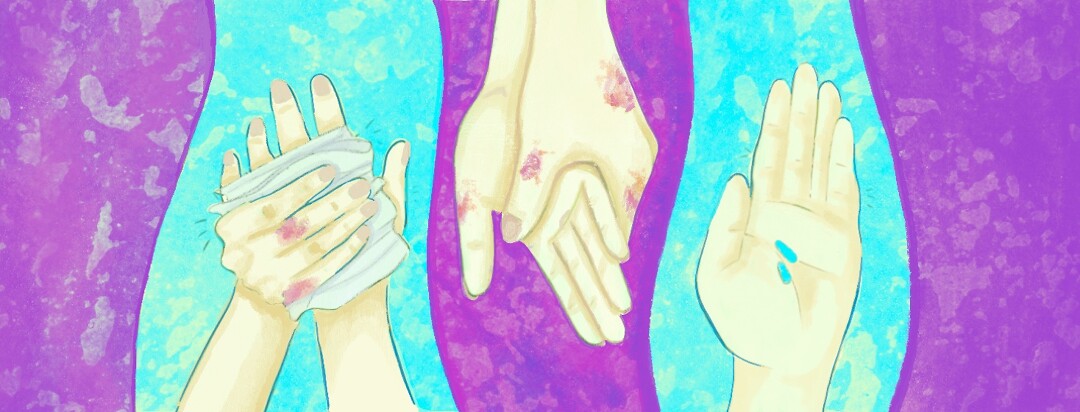Psoriatic Arthritis in the Hands
Symptoms of psoriatic arthritis (PsA) are often associated with the skin. However, PsA also impacts joints. When the joints of the hands are affected, not only does it have an impact on daily tasks, but it is very painful.1
How does psoriatic arthritis impact hand joints?
PsA is caused by your body mistakenly attacking the healthy tissue in your joints. This causes the joints to become inflamed and swollen. This can result in red, swollen, or warm joints. It can also cause stiffness and a reduced range of motion.1
All types of arthritis can impact the hands. It can be difficult to determine which type is causing your symptoms if you do not already have a diagnosis. PsA is more likely to affect the fingers rather than the wrist or other parts of the hand. Usually, with PsA, the most swelling is present at the middle knuckle.2
In serious cases, PsA can wear on finger bones and change their shape. A sign of PsA is a “pencil-in-cup” deformity on the knuckle at the tip of the finger. The pencil-in-cup deformity happens when one bone on the side of a joint becomes worn away and narrow, like a pencil. The bone on the other side of the joint becomes worn away in a cup shape.2
Start a Forum
How does psoriatic arthritis impact fingernails
PsA can also impact your fingernails. It can cause them to be pitted, ridged, or crumbly. Nail fungal infections are also very common for people with psoriasis.2
Because of these symptoms, people with PsA should consider taking extra precautions when caring for their nails. If you protect the skin around the nail, you can reduce the risk of infection and disease flares. Keeping your nails trimmed to a comfortable length can help this. Also, never push your cuticles back, either yourself or while getting a manicure.3
Nail polish can be safe, but do not use acrylic nails. Your skin can be damaged when they are removed. Do not use nail polish if you have signs of a nail infection, like redness or swelling.3
Treatment for psoriatic arthritis in the hands
Unfortunately, there is no cure for PsA. Treatment is focused on controlling symptoms and preventing permanent joint damage. Treatment usually involves daily medication, steroid injections, or surgery in severe cases. Your general treatment for PsA should reduce joint pain in your fingers and make daily tasks easier.1
Tips for caring for your hands
There are other steps you can take to help care for your hands and make daily tasks easier. Some tips for treating your hands include:3
- Icing your hands reduces pain. Use a towel between the ice pack and your skin to prevent irritation.
- Moisturize your hands after exposure to things that can be drying, like warm water.
- Consider talking to your doctor about treating your hands with other options. Some options are UV light therapy, steroid creams, and steroid injections beneath the nail.
- Over-the-counter pain relievers like ibuprofen can be used to manage pain.
- Avoid straining your finger joints. Use jar openers to open jars, lift heavy objects with both hands and push doors open with your whole body instead of just your hands.
Featured Forum
View all responsesLiving with PsA can be frustrating, especially when it affects your daily life. If you are feeling particularly discouraged, consider joining a support group or meeting with a counselor or therapist. Talking to someone could also help manage your stress levels, which are thought to have an impact on disease flares.1

Join the conversation